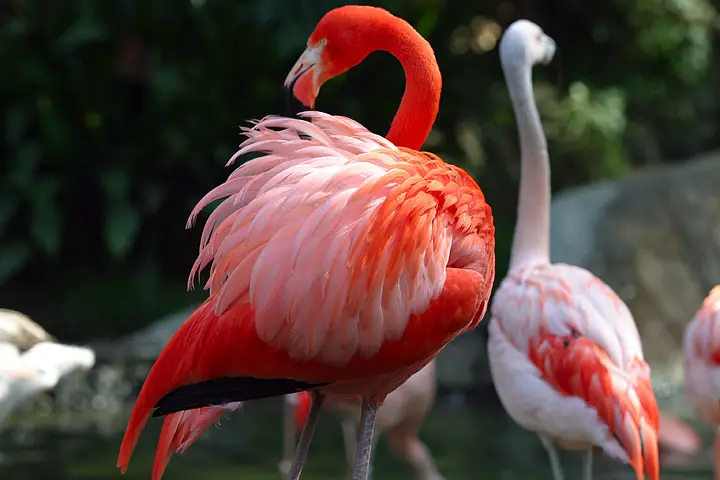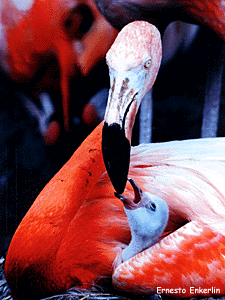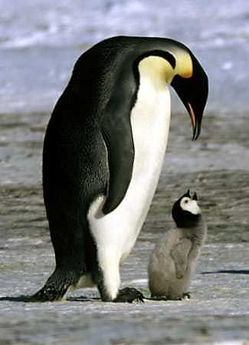Flamingo
Flamingos are one of the more gregarious of birds. They are wading birds to be more precise, found in both Eastern and Western Hemisphere, but are far more well known and more numerous in the eastern hemisphere.
There are four varieties of Flamingo in the Americas while two exist elsewhere.
Flamingos filter-feed which means that their oddly-shaped beaks are adapted to separate mud and silt from the food they eat, and are used upside-down. unique to birds. They appear to be upside down and in fact operate that way as well.

A lighter and darker flamingo side by side
The filtering of food items is assisted by hairy structures called lamellae which line their mandibles, and the large tongue.The flamingo’s characteristic pink colouring is not natural and does not exist when they are born but rather evolves over
time as they eat brine shrimp. The coloration created by the Beta carotene in their diets.
The source of the beta carotene in their diets can vary, but the primary carrier of it is either shrimp or Blue gree algae, which zoo keepers are not adding to the diets of those who are there.
Another common additive is canthaxanthin, which is often also given to farmed salmon.
Flamingos produce a “milk” like pigeon milk due to the action of a hormone called prolactin.
It contains more fat and less protein than actual milk does, and is made in glands that line the entire digestive tract of the flamingo. Both parents nurse the little flamingoes and the little ones feed on this milk for about two months.
The milk also contains both red and white blood cells that help to nourish the chicks until they are old enough to feed, which is between two and three months old.

A female flamingo feeding milk to the chick
Flamingos do often stand on one leg, and although the reason still isn’t clear, it is thought that tucking one leg beneath the body may conserve body heat or to keep the legs from getting wet, in addition to conserving energy. As well as standing in the water, flamingos may stamp their webbed feet in the mud to stir up food from the bottom prior to eating it.
They make a very distinctive sound when feeding as well. Rather like a soft honking in nature.
Young flamingos hatch with grey feathers but soon if they are a well-fed, and are fed healthy foods, they become far more bright in color.. Consequently a wild healthy flamingo is more vibrantly coloured and thus. science believes, the more vibrant the colors the more desirable they are as a mate. A white or pale flamingo,living in the wild is normally not well nourished and isn’t a mate that anyone tries to attract.
Captive flamingos are an exception; many turn a pale pink but most are not fed the level of beta carotene they would get in the wild so they stay paler in nature.
This does seem to be changing as zoos add the nutrient to their flamingos food supply.



since when do birds feed their young milk? do they go to the store and buy it? and what kind to they feed them, goat, cow, human? please let me know the answer to this question, thanks
Bird never feed their young milk ! This information is totaly unscientific. Bird eats tiny creature & insects.
this is so beautiful more than me